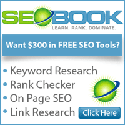What is a Landing Page?

John Mignano
A landing page is any page on a blog or website where traffic is sent specifically to get a certain action or result.
Think of a golf course…
Your landing page is the putting green you drive the ball (lead or prospect) to okay!
Once on the green, your goal is to get the ball into the hole.
Likewise, the goal of the copy and design of a landing page is to get the lead or prospect to take your desired action.
Here are a few examples of ways that landing pages are used with various traffic sources:
- Traffic is sent from a pay per click (PPC) search marketing campaign (such as Google AdWords) to multiple landing pages optimized to correspond with the keywords the searcher used.
- Traffic is sent from a banner ad or sponsorship graphic to a landing page specifically designed to address that target audience
- Traffic is sent from a url or link in an email to a landing page designed to prompt a purchase
- Traffic is sent from a blog post or sidebar link to a landing page that pre-sells affiliate products or encourages an opt-in to a sub-list.
In fact, the page you’re currently reading is a content landing page designed to organize many related pages around an overall theme.
10 Tips for Writing the Ultimate Landing Page
Do you have a deep-pocket for your online media budget?
Google Adwords PPC, banner ads on major news sites. We’re talking some sizable money to generate traffic and turn that traffic into customers.
Is a big part of your budget for landing page development and testing?
One question…is your business website using a series of landing pages?
In fact, are you planning to use even one landing page?
I mean let’s get serious here because all of the clicks, all of the costly PPC traffic is going to directed to your homepage, right?
Literally, you’re sending your valuable leads and prospects no where.
You’re basically dumped customers off at the front door with little direction or guidance as to how to take action.
Now just to be fair, literally any page of your site or blog is a landing page of a sort.
To my mind, every page should be optimized to move your visitor along whatever path towards a sale, a newsletter or blog subscription or whatever your goal.
Now for the purposes of this post, I’ll continue to explain why landing pages are used where your prospect initiated some sort of response to an ad.
This could be a PPC (pay-per-click) ad like Google Adwords, a banner or text ad, or even an email.
In this scenario, your prospect has initiated some sort of relationship with you.
Your landing page acknowledges this by providing additional information in the form of benefits/features with a clear path to the next step.
So let’s look at 10 key steps to writing and designing a landing page that will help get you the results you’re looking for:
1. Headline
Make sure your headline refers directly to the place from which your visitor came or the ad copy that drove the click.
Match your language as exactly as you can. (Close is good, exact is best.)
This way you keep your visitor oriented and engaged. This is by far the most important part of your landing page.
2. Provide a clear call to action.
Whether you use graphic buttons or hot-linked text (or both), tell your visitor what they need to do.
I use a minimum of 2 calls to action in a short landing page, 3-5 in a long landing page. Copy tests here will give you the biggest bang next to testing headlines.
3. Write in the second person
You and Your and the two most important words in the English language.
The truth is, no one gives a second thought about you, your company, or even your product or service except as to how it benefits him or her.
Over the years I’ve found the bigger the company the more time I spend rewriting their copy and content from We to You.
4. Write to deliver a clear, persuasive message.
You want focus and clarity, not to showcase your creativity or ability to turn a clever phrase.
This is business, not a personal expression of your art. (Every business coaching student hears me say this at least once.)
5. You can write long copy as long as it’s tight.
In reality, writing a long first draft is easier. The trick is to edit down than to try and pad up skimpy copy.
Your reader will read long copy as long as you keep building a strong, motivating case for him/her to act.
However, not every product or service will require the same amount of copy investment.
Rule of thumb: Think longer copy when you’re looking to close a sale.
Think shorter copy for a subscription sign-up or something that doesn’t necessarily require a cash commitment.
6. Be crystal clear in your goals.
Keep your body copy on point as a logical progression from your headline and offer.
Don’t add tangential thoughts, ancillary services, and generic content that wastes your readers time.
Every digression is a conversion lost and a confused mind says NO.
7. Keep your most important points at the beginning of paragraphs and bullets.
Most visitors are skimming and skipping through your copy. Make it easy for them to get the joke without having to slow down.
8. In line with #7
People typically scroll down and read beginnings and ends before they read middles. Make sure you keep your most critical, persuasive arguments in these positions.
9. Make your first paragraph short.
Short as in no more than 1-2 lines (that’s lines, not sentences.) Vary your paragraph line length from here.
It helps to create visual differences as it makes reading your copy so much easier. And no paragraph should be more than 4-5 lines long at any time.
10. Write to the screen.
Take a piece of paper and frame-out where your text, buttons, and design elements will go.
Consider how much of your content will be seen “above the fold” or at the first screen. You can still go long and have visitors scroll downward.
If so, you’ll want to make sure you repeat essential calls to action, make sure testimonials and other components are strategically placed so no matter where your visitor is, an ACT NOW link or button is visible.
Remove all distractions from your landing page.
This includes navigation bars, visual clutter, and links to other sections.
You want the reader focused solely on your copy, your supportive visuals, and the offer you’re making without being tempted to wander around the room.
Don’t ask for what you don’t need.
Ask for only enough information to complete the sale or the desired action.
This isn’t the time to conduct a marketing survey. Every question you ask, every piece of information you require will lower your response.
Assume nothing. Test everything.
These tips and techniques will get you started, but they just scratch the proverbial surface.
Design elements are critical, too as is color, images, layout as well as video, audio, and other interactivity elements.
The purpose is to more deeply engage the reader and boost response. They all merit a deeper look and testing where it makes sense.




